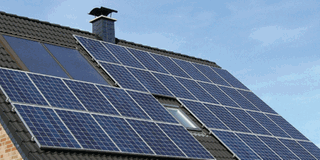Prime
Build for environmental sustainability

It might be a new concept to many home owners and builders in Uganda, but green building construction has spread rapidly in the developed world.
Did you know that over a third of energy is consumed in buildings worldwide? Did you know that in the world, waste deposited in landfills is the third largest source of anthropogenic methane emissions which is 23 times more potent as a green house gas agent than carbon dioxide?
Did you know that emissions from cars, heavy trucks, buses and trains contribute almost 12 per cent of green house gas emissions worldwide?
Green building does not necessarily mean that the colour of your building is green, but the building’s design emphasises sustainability.
The importance
A green building is one that has been designed to have environmentally friendly conditions which efficiently use available resources throughout its designed life. In other words, green buildings conserve the environment and natural resources by using little water and energy, have less waste generation and a healthy living space compared to our conventional existing buildings.
Green structures have been adopted purposely to minimise wastage of existing scarce resources like water and energy, eradicate environmental pollution and degradation that causes diseases. Also, it safe guards the health of the residents in those buildings. This is contrary to the concepts that are used in constructing our conventional buildings, that is to say, being economical, attaining utility, being comfortable and increasing durability of the structure.Although the concept of green buildings is slowly being adopted in Uganda, in other countries like Australia, United Kingdom, United States of America and Switzerland, the governments are already advocating for them and laws are in place to guide the construction of these buildings.
In India, the Green Building Council exists. In United States of America, the International Green Construction Code is one of the codes used, in Italy, the Green Building Council also exists. These codes came in place due to high environmental pollution, environmental degradation, and lack of sustainability, among others.
According to Mr Pascal Kabandize, an architect with Infrastructure Design Forum, a lot of energy is wasted in Uganda, for instance, the energy used to light flourescent tubes is offices is less than the energy lost as heat in the bulbs’ chalk.
Basic features
There are different aspects that make a house a green building, such as:
Energy preservation
A green house should have a mechanism to reduce the use of energy. Windows having a high efficiency and a good thermal insulation system can be used to reduce energy waste. For instance, you can use sunlight to light your office during the day without using hydro electric power bulbs. Alternatively, you can use a solar panel to light your bulbs. Using hydro electric power in this case is not being green.
When it comes to outdoor lighting, high efficiency LED and induction lamps, ultra- efficient electronics and centralised intelligent control systems can be used by cities to reduce energy use up to 70 per cent. Also, by replacing incandescent traffic signals with LEDs can significantly reduce cities’ traffic signal energy use up to 90 per cent. Mr Kabandize says that embracing the outdoor living space like verandahs, patios and gazebos (outside open huts) is good idea.
Water conservation
Reduction of runoff water, quality improvement and minimising water use is one of the green building techniques. If you plant grass in your compound, you save a lot of run-off water contrary to one with an all concrete cast compound. Using eco-san toilets to replace flush toilets is a way of saving water. All these contribute to a green building.
Materials used
Green building materials are those materials that are considered to be renewable. For instance, bamboo due to its fast growth rate and others like straw and lumber (wood ready for use). Also, the use of recyclable material is encouraged, for instance, using timber and demolished debris.
Environmental quality
The quality of the air within the building should be free from volatile organic compounds hence improving the indoor air quality. This can be achieved by building and cleaning your home using materials with little or low emissions.
Waste management
A green building should have minimal waste from occupants. This can be attained by giving on-site solutions for excreta. For instance, garbage pits for kitchen refuse and soak pits for grey water. This helps to reduce the load on municipal treatment plants and landfills.
House location
Locate your house in an area that doesn’t need tampering with the existing landscape and surrounding natural features. Also, one can plant flowers and shrubs that consume less water.
Their benefits
We can also ask ourselves, what are the benefits of green buildings compared to conventional structures?
Low life cycle costs
A study showed that, an initial increment in the first costs of approximately two per cent of green design, will give a life cycle saving of greater than 10 times the initial investment, or 20 per cent of total construction costs.
Good health
Since the materials used in green buildings are often natural materials, less or no emissions are given off compared to manufactured materials. This gives better health to occupants with no sicknesses and allergies.
Cost effective design
A well-planned integrated green design will give a saving in energy by 25-30 per cent. Design systems like building orientation, natural ventilation, natural day lighting and onsite renewable technologies reduce energy consumption hence reducing costs significantly.
Better environment
By using environmentally friendly materials and strategies for construction, environmental pollution is reduced. Also, resource sustainability is guaranteed because using eco-friendly systems like planting grass compounds, composting, recycling and afforestation are used.
One of the sensitive issues about green buildings is the price. The initial cost of erecting the building is often high compared to the conventional ones but the long term running costs are always less hence saving a lot in the long run. With such benefits, setting up a green building would will be beneficial to both our economy and the environment.




